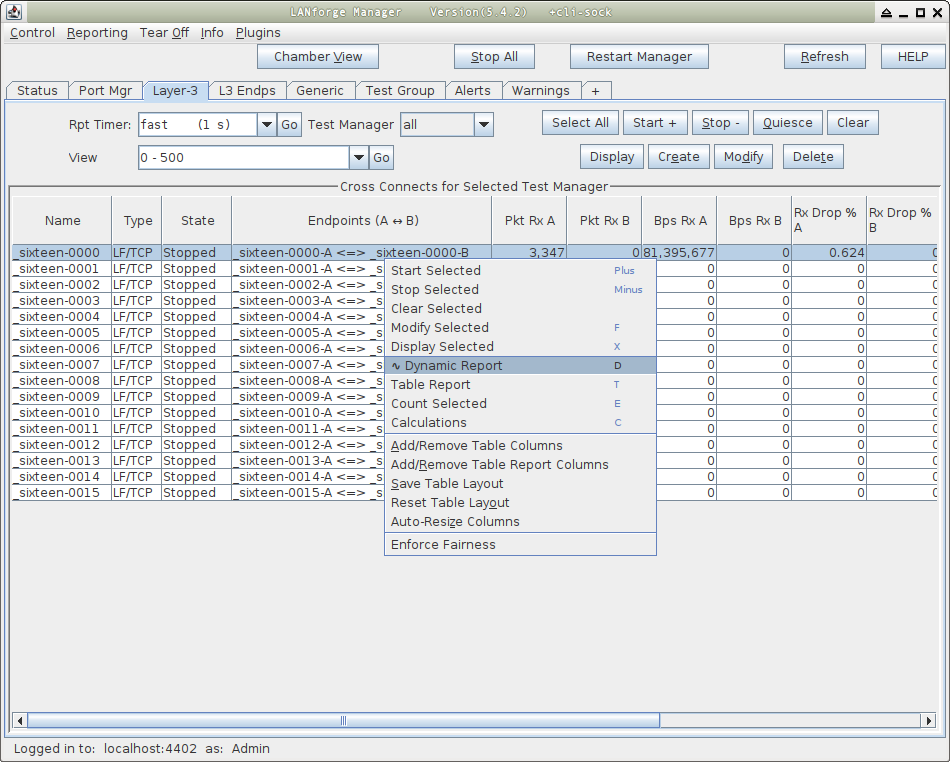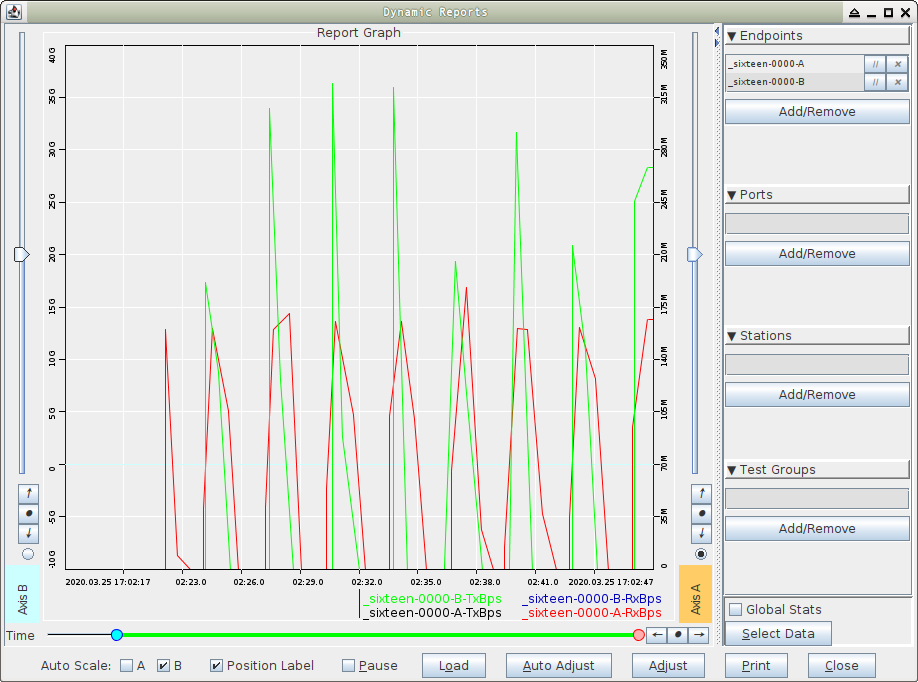|
|
||
| Network Testing and Emulation Solutions |
| Using the l3_video_em.pl and the l3_vid_group.pl, we assemble two test groups of connections, a group of Generic connections, and a group of Layer3 connections, that emulate the bursty buffer filling pattern of traffic that video streaming tends to resemble. Requires LANforge 5.4.2. |

|
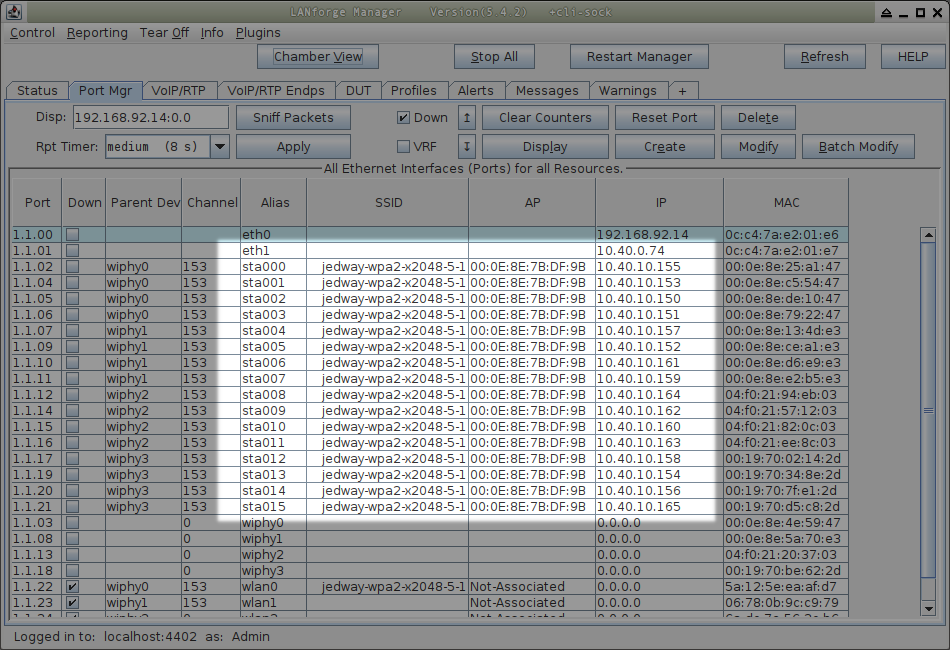
For more information see Creating Stations
For more information see LANforge Entity IDs
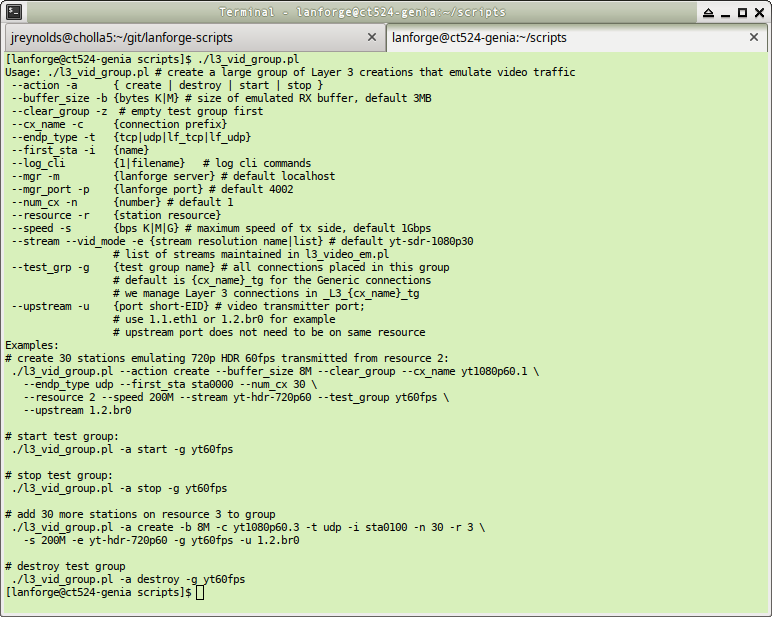
./l3_vid_group.pl --action create --endp_type tcp --first_sta sta000
--num_cx 16 --test_grp sixteen --upstream 1.1.eth1


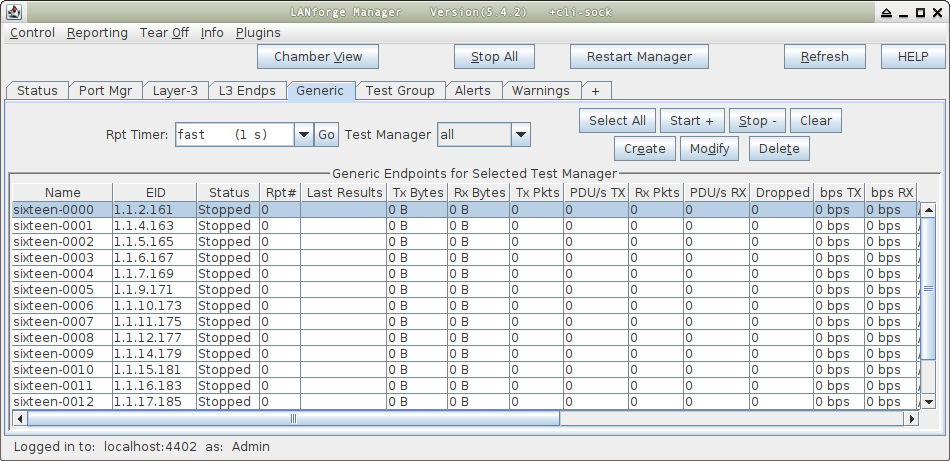
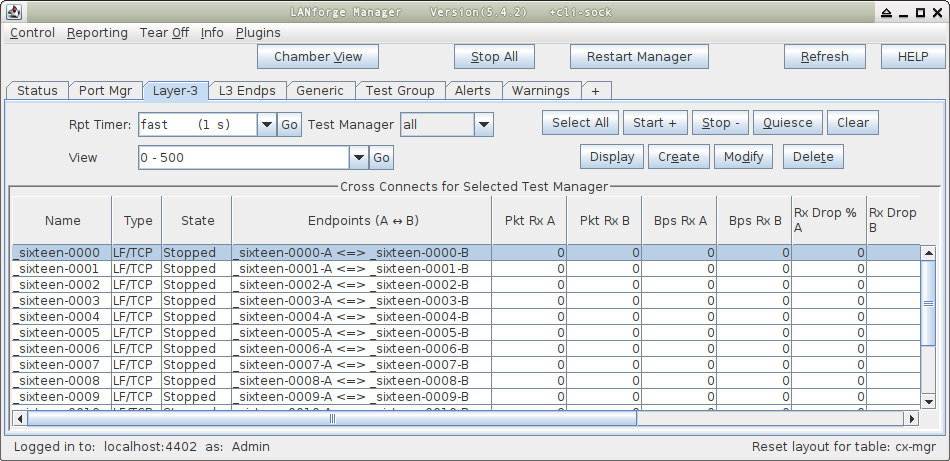
/home/lanforge/scripts/l3_video_em.pl --mgr localhost --mgr_port 4001You can paste this command into a shell prompt on your LANforge and use it. We discuss the options in the following section.
--cx_name _sixteen-0000 --max_tx 1000000000 --buf_size 3145728 --stream yt-sdr-360p30
--tx_style bufferfill --quiet yes
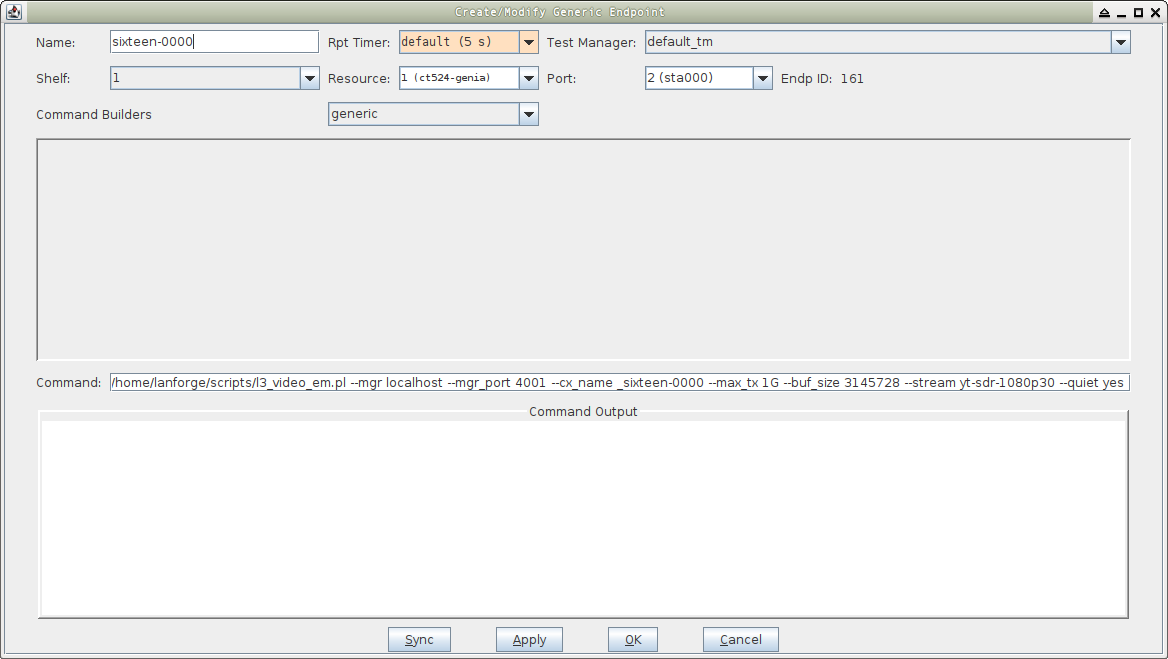


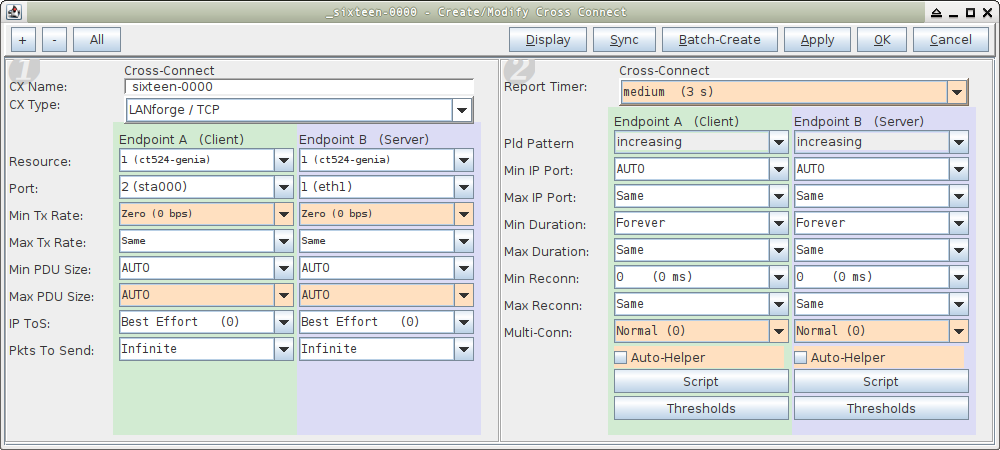
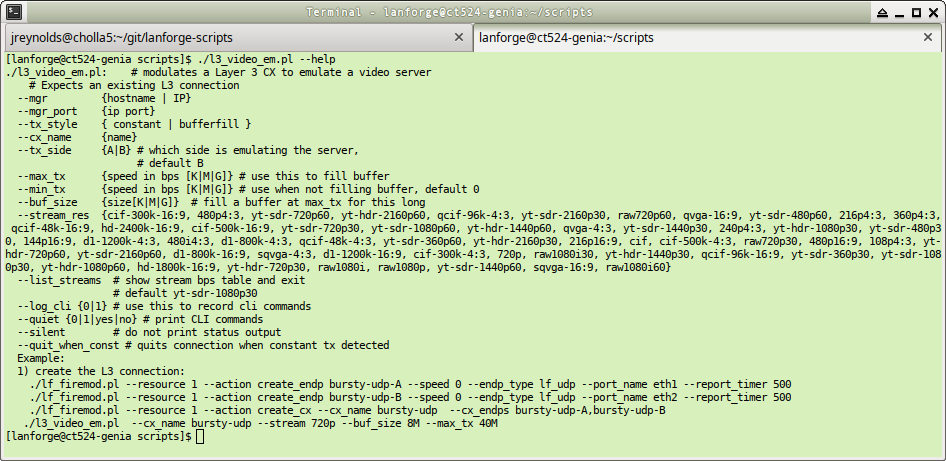
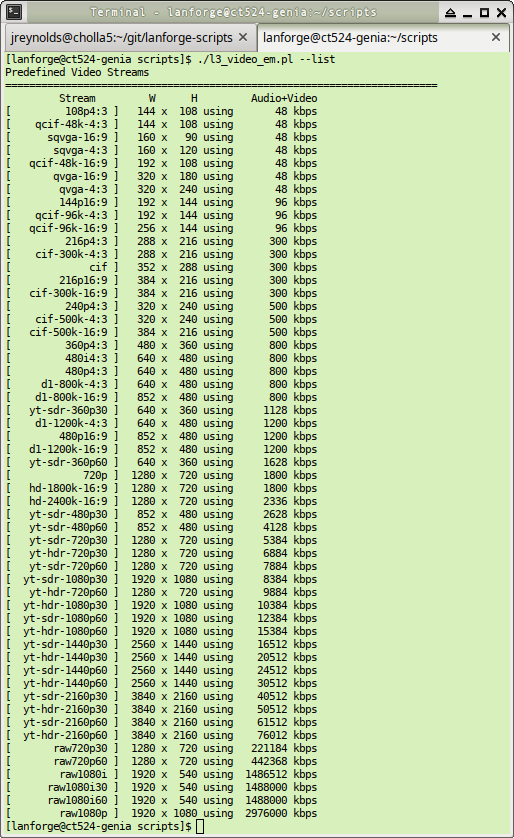
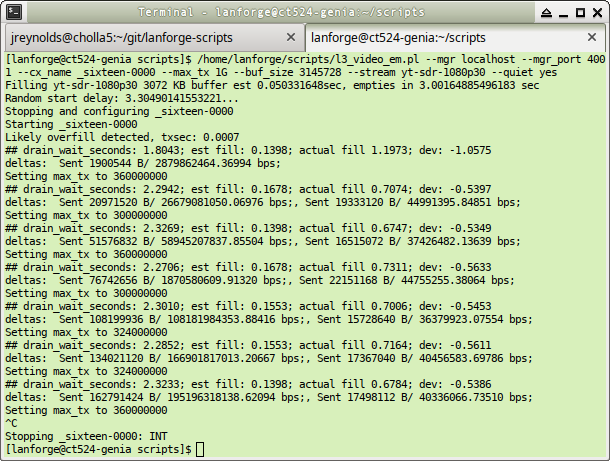
./l3_vid_group.pl --test_grp sixteen --action start
./l3_vid_group.pl --test_grp sixteen --action stop
